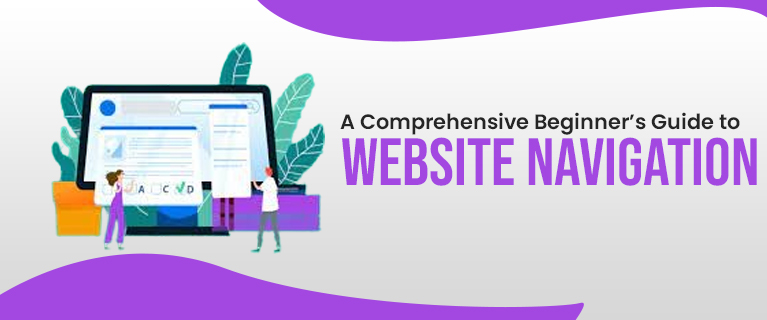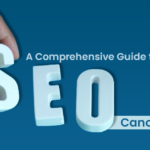Creating an effective website navigation system is akin to architecting a seamless roadmap for your visitors. A well-structured navigation not only enhances user experience but also plays a pivotal role in reducing bounce rates and boosting conversions. In this comprehensive guide, we’ll delve deep into the do’s and don’ts of website navigation, shedding light on common pitfalls and providing detailed insights into creating a navigational structure that seamlessly transforms visitors into customers.
Read Also This – What is the Cost of Website Designing in Delhi
Understanding the Essence of Website Navigation:
Your website’s navigation acts as the underlying blueprint, orchestrating the journey for visitors through your content seamlessly. A clear and intuitive navigation system functions like a red carpet, not only inviting users to explore and interact but also influencing positively your search engine optimization (SEO) efforts.
Exploring Various Types of Website Navigation:
Diverse navigation types cater to different content and layouts, providing versatility in design. Each type of navigation has its unique advantages and is suitable for different website layouts and content structures. The choice among these types depends on factors such as the nature of your website, the preferences of your audience, and the overall user experience you aim to deliver.
1. Top Navigation:
- Located at the top of a website.
- Conventional and widely used.
- Displays essential categories or pages.
- Offers a straightforward and easily accessible menu.
![]()
2. Sidebar Navigation:
- Vertical navigation positioned on either side of a website.
- Commonly used for blogs or content-heavy sites.
- Commonly used for blogs or content-heavy sites.
- Allows users to quickly jump between sections.
Read Also This – How Much Do They Charge For Website Designing

3. Hamburger Menu:
- A compact menu symbolized by three horizontal lines.
- Typically used for mobile sites to conserve space.
- Reveals a hidden menu when clicked or tapped.
- Offers a clean and minimalist design on the main interface.

4. Footer Navigation:
- Located at the bottom of a website.
- Contains links to essential pages like privacy policies and contact information.
- Serves as a secondary navigation area.
- Ensures users have access to important information even after scrolling.

5. Mega Menus:
- Large dropdown menus that can accommodate numerous items.
- May include images, videos, or additional content.
- Suitable for websites with extensive content or e-commerce platforms.
- Provides a visually rich and comprehensive navigation experience.

Deeper Dive into Website Navigation Best Practices:
1. Establishing a Comprehensive Sitemap:
Before embarking on website designing, it’s paramount to create a sitemap. This visual representation serves as the foundational blueprint, aiding not only search engines in understanding your site’s structure but also enhancing user navigation. By outlining how pages relate to one another, you ensure a logical flow from one section to the next.

Read Also This – How Much Do They Charge For Website Designing
2. Strategic Limitation of Menu Items:
The top navigation menu follows the principle of “less is more.” Maintaining a concise selection of around five to seven items prevents overwhelming visitors. This is especially critical in areas like e-commerce where a large number of products might necessitate thoughtful categorization and prioritization.
3. Thoughtful Planning of Navigation Bar Order:
The order of items in your navigation bar matters significantly. Placing the most critical pages towards the beginning and end of the menu strategically attracts the most attention. Ensuring a logical flow and grouping related items together enhances user engagement and satisfaction.

4. Creating Aesthetic Separation:
Beyond just functionality, aesthetics play a crucial role in navigation. Ensuring ample space between each navigation item not only prevents accidental clicks but also contributes to a visually pleasing menu. This is particularly vital for mobile users who rely on touch, emphasizing the importance of providing enough space for accurate taps.

5. Analytics as a Navigation Compass:
Navigating the waters of website optimization can be intricate, but analytics serves as a powerful compass. Integrating tools like Google Analytics provides a wealth of data, translating user interactions into actionable insights. The User Flow report visually represents user paths, highlighting common routes and potential areas of confusion, while the Behavior Flow report unveils engagement patterns and points of departure.

6. Analyzing Exit Pages:
Examining exit pages is crucial. A high exit rate on a page not intended as a final destination could signal navigation challenges. Investigating these pages ensures they provide clear options and compelling calls to action.

Read Also This – What is a Website Designing Company
Leveraging A/B Testing:
Experimenting with different navigation structures through A/B testing allows for a direct comparison of performance, helping identify which elements yield the best results.
6. Strategic Inclusion of Calls To Action:
Website navigation design elements aren’t just about guiding users through content; they are powerful tools for driving actions. Integrating prominent calls to action (CTAs) such as “Sign Up,” “Contact Us,” or “Get Started” within navigation ensures these key actions are always within reach.

7. Understanding User Intent:
Your website’s navigation should align with the user’s needs and intentions. Reflecting on why someone would visit your site, their search intent, guides how you structure your navigation. An e-commerce site, for example, should prioritize product categories and shopping carts, while a blog might focus on highlighting popular or recent posts.
Strategic Navigation by Yeti:
Examining Yeti’s approach to guiding users through their shopping journey showcases an example of intuitive navigation aligned with user intent. This thoughtful design allows for quick and easy purchases.
Website Navigation Pitfalls and How to Avoid Them:
While creating an efficient and user-friendly navigation setup is crucial, it’s equally important to steer clear of common pitfalls that could hinder user experience and potentially harm your site’s SEO.
1. Mobile View Neglect:
In today’s mobile-centric world, ensuring flawless performance across all devices is paramount, especially smartphones. On a smaller screen, a navigation menu that functions flawlessly on a desktop computer may become a disorganized mess. Rigorous testing of mobile navigation and responsive web design adjustments are essential to guarantee a seamless experience for mobile users.
2. Strategic Placement of Social Icons:
While social proof is vital and showcasing your social media presence is important, the top of your navigation menu isn’t the ideal place for these icons. Placing social icons in the header can distract from your content and main conversion points. Instead, consider placing them in the footer or a dedicated “Contact Us” page.

3. Optimal Drop-Down Menu Size:
Drop-down menus can be valuable navigation tools, but when they’re too small, they become a frustrating obstacle for users. Ensuring that drop-down menus are large enough to be easily clickable, with readable text on all devices, is essential. Avoid cluttering these menus with too many options, focusing on providing clear, direct paths to your most important pages.
4. Avoiding Menu Overload:
Overloading your navigation menus with a multitude of options can overwhelm your visitors and dilute the effectiveness of your site’s structure. Prioritize your most critical pages and think about using secondary menus or footer links for less important content rather than stuffing everything into the main menu. Simplicity remains key — a streamlined, focused navigation menu will consistently outperform a cluttered, overwhelming one.
Why Choose Cloudgeta for Your Website Designing Needs:
In the ever-evolving landscape of web design and user experience, choosing a reliable partner for website design and digital marketing is pivotal. Cloudgeta emerges as a distinguished choice for several reasons:
1. Expertise in Intuitive Design:
Cloudgeta brings a wealth of expertise to the table, ensuring that your website becomes not just a digital space but a user-friendly masterpiece. Their design approach seamlessly blends aesthetics with functionality, creating an online presence that captivates and engages visitors.
2. Digital Marketing Strategies:
Beyond website design, Cloudgeta excels in implementing digital marketing strategies. In a world where visibility is key, Cloudgeta ensures that your online presence is not only visually appealing but also strategically positioned to reach your target audience effectively.
3. User-Centric Approach:
Cloudgeta understands the significance of user experience. Their designs are crafted with a user-centric approach, ensuring that visitors not only navigate seamlessly but also engage meaningfully with your content.
4. Results-Driven Solutions:
Cloudgeta’s commitment extends beyond design aesthetics. They are dedicated to delivering results. Whether it’s enhancing user experience, increasing conversions, or improving your site’s overall performance, Cloudgeta adopts a results-driven approach to their solutions.
5. Responsive Design for All Devices:
Recognizing the importance of cross-device functionality, Cloudgeta ensures that your website is not only visually appealing on desktops but also seamlessly adapts to various screen sizes, especially on mobile devices. Responsive web design is a cornerstone of their commitment to providing an optimal user experience across all platforms.
6. Incorporation of Latest Trends:
In the dynamic field of web design and digital marketing, staying ahead of the curve is essential. Cloudgeta remains informed and adaptive, incorporating the latest trends and technologies into their solutions. This ensures that your website is not only current but also positioned to meet the evolving expectations of online users.
7. Tailored Solutions for Your Business:
Understanding that each business is unique, Cloudgeta provides tailored solutions that align with your specific goals and requirements. Whether you’re an e-commerce platform, a blog, or a corporate entity, Cloudgeta’s design and marketing strategies are crafted to suit your distinct needs.
8. Transparent Communication:
Effective collaboration relies on transparent communication. Cloudgeta maintains clear and open lines of communication throughout the design and implementation process. This ensures that your vision is not only understood but also translated into a digital reality that reflects your brand identity and objectives.
Conclusion:
In the ever-evolving landscape of web design and user experience, the significance of intuitive and effective navigation cannot be overstated. Your website’s navigation is the guiding force that directs visitors through your site’s content, leading them to the information they seek and encouraging them to take desired actions.
By adhering to the best practices and avoiding common mistakes outlined in this guide, you set the stage for a user-friendly experience that not only satisfies your audience but also contributes positively to your SEO efforts. Cloudgeta emerges as a reliable partner in this journey, offering not only exceptional website design but also a strategic approach to digital marketing that enhances your online presence and drives meaningful results.
Remember, your website often serves as the initial point of contact between your brand and potential customers. Choosing a partner like Cloudgeta ensures that this first impression is not only positive but also sets the foundation for a lasting and meaningful relationship. Embrace the power of thoughtful website navigation and the expertise of Cloudgeta to make your online presence a compelling and successful one.



